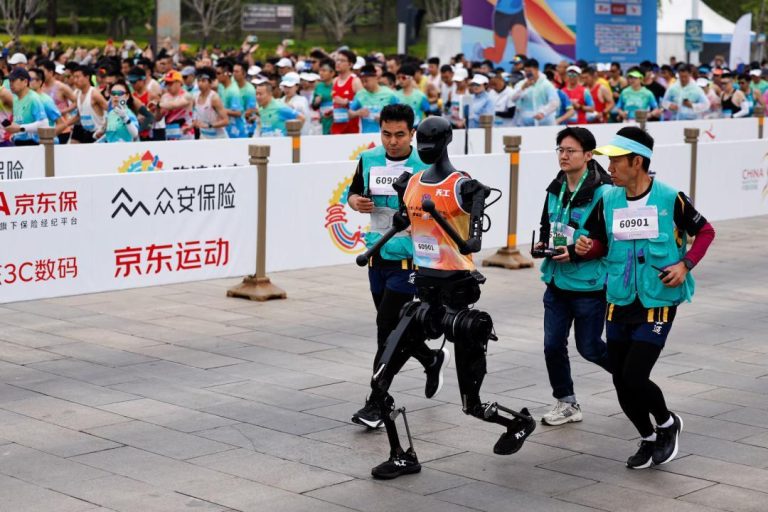
Physiotherapy: How AI & AR are making pain a thing of the past
Pain is an age-old problem that has plagued humanity for centuries. From chronic back pain to acute injuries, it’s a universal issue that affects people of all ages and backgrounds. However, with the advent of technological advancements, physiotherapy is evolving, and AI and AR are playing a significant role in making pain a thing of the past.
Physiotherapy, also known as physical therapy, is a healthcare profession that focuses on preventing, diagnosing, and treating disorders and injuries that affect the musculoskeletal, cardiovascular, and nervous systems. Traditionally, physiotherapy involved manual therapy, exercise programs, and patient education. However, with the integration of AI and AR, physiotherapy is now more effective, efficient, and accessible than ever before.
AI-powered Physiotherapy
Artificial intelligence (AI) is revolutionizing physiotherapy by providing real-time posture corrections, personalized exercise plans, and early detection of musculoskeletal issues. AI algorithms can analyze a patient’s movements, detect abnormalities, and provide customized exercises to correct them. This technology is particularly useful for patients with chronic pain, as it helps to identify and address underlying issues that may be contributing to their discomfort.
One example of AI-powered physiotherapy is the use of wearable devices that track a patient’s movements and provide real-time feedback on their posture, movements, and exercises. This technology is particularly useful for patients with conditions such as scoliosis, where proper posture is crucial to preventing further deterioration.
AR-powered Physiotherapy
Augmented reality (AR) is another technology that is transforming physiotherapy. AR overlays digital information onto the real world, allowing patients to visualize their body and movements in a way that was previously impossible. This technology is particularly useful for patients who struggle to understand complex exercises or need additional guidance to perform them correctly.
One example of AR-powered physiotherapy is the use of virtual reality (VR) headsets that provide patients with immersive experiences that simulate real-world scenarios. For example, a patient with a fear of heights may use a VR headset to gradually exposure themselves to heights, helping to overcome their phobia.
How AI and AR are making physiotherapy more effective
AI and AR are making physiotherapy more effective in several ways:
- Personalized treatment plans: AI algorithms can analyze a patient’s medical history, lifestyle, and movement patterns to provide personalized treatment plans that are tailored to their specific needs.
- Real-time feedback: AI and AR technologies provide real-time feedback to patients, allowing them to correct their movements and exercises in real-time.
- Early detection: AI algorithms can detect musculoskeletal issues early on, allowing for prompt treatment and prevention of further deterioration.
- Accessibility: AI and AR technologies are making physiotherapy more accessible to people who may not have access to traditional physiotherapy services.
Benefits of AI and AR in physiotherapy
The benefits of AI and AR in physiotherapy are numerous:
- Improved patient outcomes: AI and AR technologies are providing better patient outcomes by providing personalized treatment plans and real-time feedback.
- Increased efficiency: AI and AR technologies are streamlining physiotherapy services, reducing the time it takes to diagnose and treat patients.
- Reduced costs: AI and AR technologies are reducing the costs associated with physiotherapy, such as reduced hospital stays and fewer surgeries.
- Enhanced patient engagement: AI and AR technologies are engaging patients more effectively, reducing the risk of non-compliance and improving overall patient satisfaction.
Challenges and limitations
While AI and AR are revolutionizing physiotherapy, there are still challenges and limitations to consider:
- Data accuracy: AI algorithms require accurate data to provide effective treatment plans. However, data accuracy can be a challenge, particularly in cases where patients may not provide accurate information.
- Technical limitations: AR and VR technologies require high-quality equipment and infrastructure, which can be a challenge in areas where resources are limited.
- Cost: AI and AR technologies can be expensive, particularly for healthcare systems that may not have the resources to invest in these technologies.
Conclusion
Physiotherapy is evolving, and AI and AR are playing a significant role in making pain a thing of the past. These technologies are providing real-time posture corrections, personalized exercise plans, and early detection of musculoskeletal issues. By shifting focus from treatment to prevention, AI and AR are revolutionizing physiotherapy, ensuring accessible and proactive healthcare for all.
As the healthcare industry continues to evolve, it’s clear that AI and AR will play an increasingly important role in physiotherapy. By embracing these technologies, healthcare providers can provide better patient outcomes, increased efficiency, and reduced costs.
Source:
https://www.healthcareradius.in/features/technology/physiotherapy-obesity-tech






